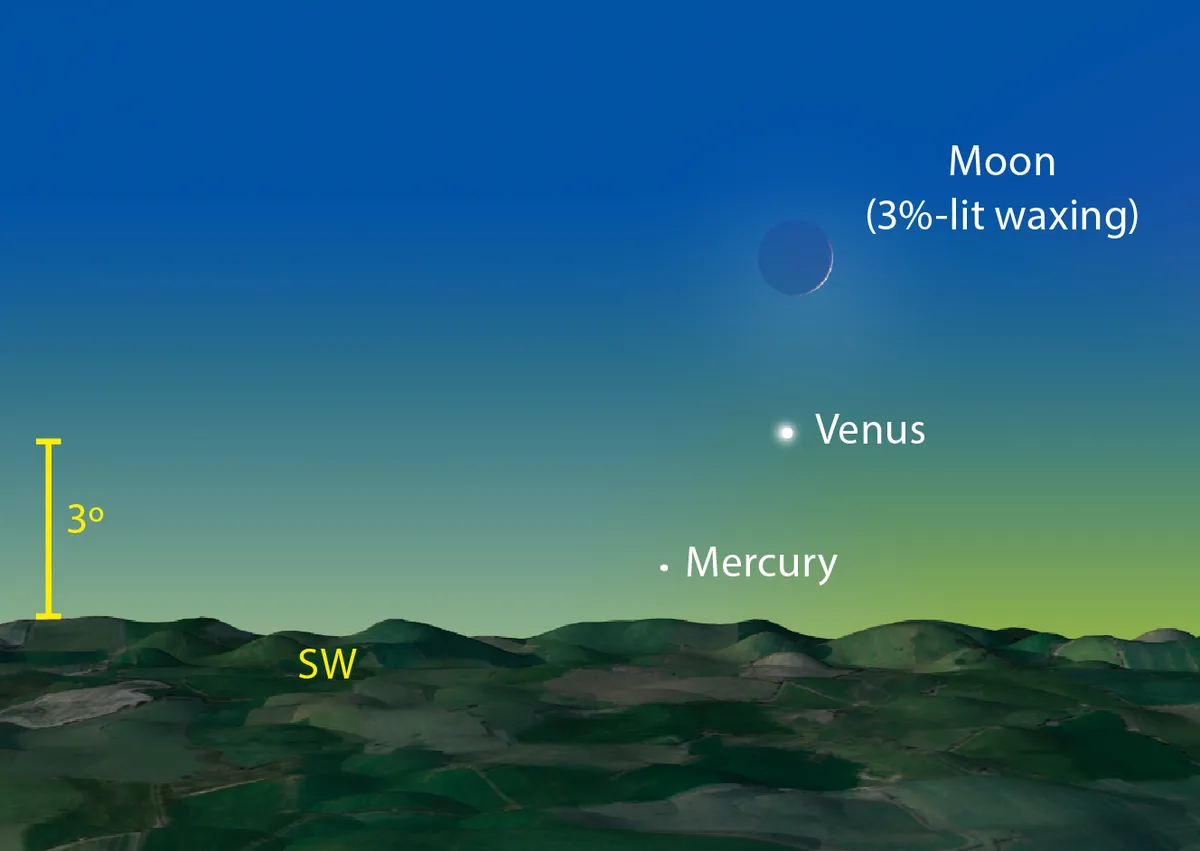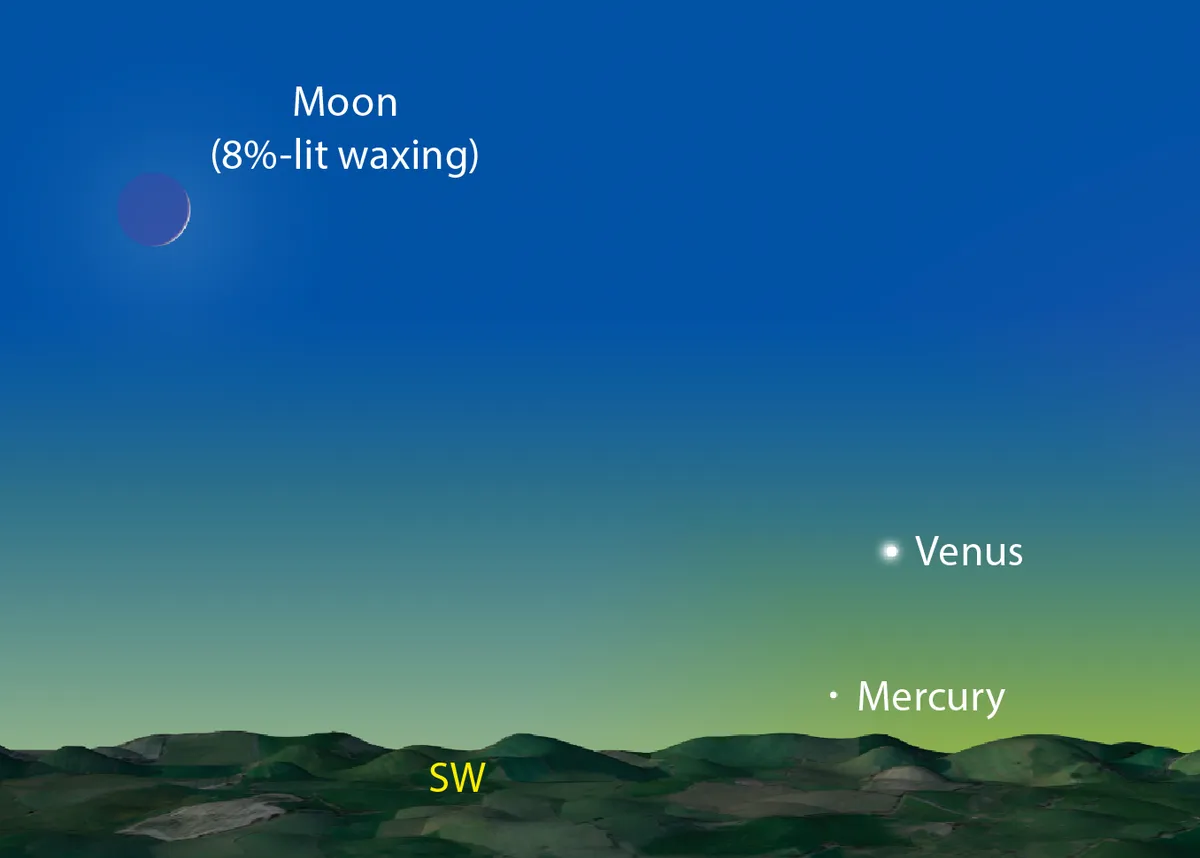'Conjunction' has several meanings in astronomy, but generally it is taken to mean a close proximity between two or more objects in the sky. If the Moon appears near Venus, they are loosely described as being in conjunction.
The majority of conjunctions do concern the Moon. Another type are solar conjunctions, which occur when the main planets line up with the Sun.
Alignment on the opposite side of the Sun to Earth is known as a superior conjunction.
Mercury and Venus can also line up with the Sun on the same side as Earth. This is an inferior conjunction.
A more formal definition of conjunction is when two objects share the same ecliptic longitude.
The Ecliptic is a great circle described by the apparent annual motion of the Sun.
Alternatively, a conjunction in right ascension occurs when two objects share the same right ascension value.
This month, there are several conjunctions occurring. On the evening of 3 October, a 30%-lit waxing crescent Moon appears close to the bright planet Jupiter.
As the pair descend towards the western horizon, their separation, centre-to-centre, reduces to around 1.3°.

On 5 October, it’s the turn of Saturn to get a visit from the Moon, when the pair will be separated by an even tighter 1° at around 22:30 BST (21:30 UT).
Earlier on the same evening, a telescopic view of Jupiter will reveal a tenth-magnitude star 34 arcseconds from the planet’s centre.
Things then quieten down for a few days.
There’s an interesting daylight Jovian double shadow transit on 24 October. Transits and eclipses can also be considered a form of precisely aligned conjunction.
Then just after sunset on 29 October, mag. –3.8 Venus appears 3° below a slender 3%-lit waxing crescent Moon.
Despite being twilight challenged, Venus should stand out against the bright post-sunset sky given a flat horizon.
The following evening, look for Venus with binoculars – after making sure the Sun has truly set.
If the sky is clear, you should be able to see mag. 0.5 Mercury, 2.6° below Venus, or approximately half the field-of-view diameter for the average pair of binoculars.

Finally, on 31 October, if you can find the 14%-lit waxing crescent Moon at 14:10 UT in a daylight sky, use binoculars or a low magnification telescope and see if you can spot a ghostly low contrast Jupiter 24 arcminutes south of the Moon’s centre and 9 arcminutes from its southern limb.
This article originally appeared in the October 2019 issue of BBC Sky at Night Magazine. Pete Lawrence is an experienced astronomer and a co-presenter of The Sky at Night.
